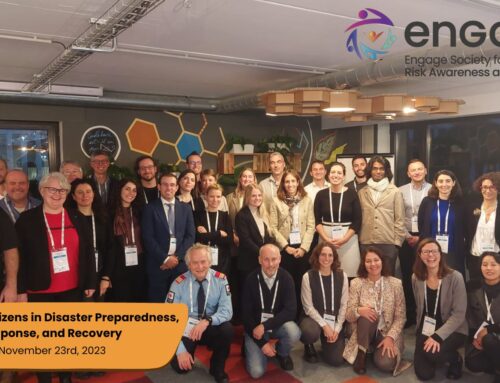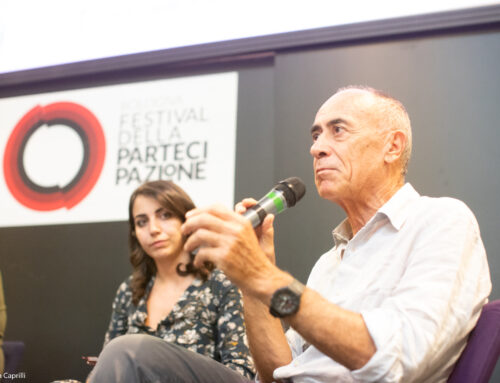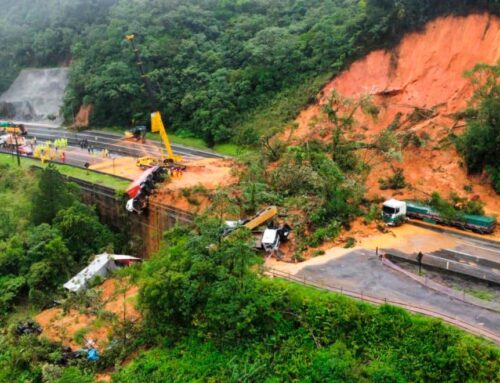The first deliverable “D1.1 – Preliminary model for assessing and methods form improving societal resilience” summarises the results of the first research actions, which emerged from the analysis of seven case studies by combining the analysis of the existing literature on coping actions (actions aimed to adapt to a crisis situation to overcome its negative effects) and the investigation of grassroot experiences on the basis of data collected through interviews and focus groups.
The general purpose of the deliverable is to present a preliminary model that helps to understand the conditions of social resilience (defined as the process that allows all types of social actors to overcome a disruptive event by relying on social bonds and values) by focusing on the contributions of citizens, informal organisations, communities and social groups.
In this article we intend to deepen some aspects, which could limit the ability of citizens and communities to implement coping actions, focusing on the experience gained by Cittadinanzattiva in the field interviews carried out with the citizens of L’Aquila who lived the experience of the earthquake of 2009. Particular attention is paid to the measures and methods implemented by the authorities, with the aim of bringing further elements to the discussion on the best approaches to foster and increase the resilience of communities.
Starting from the experience of the management of the 2009 earthquake, the local community of L’Aquila has clearly indicated some extremely critical and highly limiting factors the ability of citizens, in single and associated form, to be able to express their resilience and coping capacity.
Before the emergency
Prevention and training of citizens on adverse events, for example in places highly exposed to seismic risk such as L’Aquila, can make a huge contribution to the community’s ability to survive the emergency and minimise human costs.
Prevention incorporates important and different programming phases within a broader path, in relation to which information, training and simulation appear unavoidable steps to ensure adequate response capacity.
Being informed about what are, for example, the vulnerability of the territory, in order to develop a knowledge framework that fosters awareness of the risks associated with living in places exposed to potential high-impact natural phenomena. It is an important first step to learn to live with the criticalities that characterise the territory and try to limit the loss of human life, damage to property and panic explosions during events that are otherwise perceived and experienced as sudden, unforeseen.
In part, this aspect represents one of the first critical elements that the interviewees highlighted. Everyone was aware that the situation was extremely at risk due to the numerous tremors that preceded the earthquake on the morning of April 6, 2009. The reassurances transmitted by the authorities had contributed, however, to lower “the level of alert”, to somehow underestimate the growing threat of what was about to happen. The effect produced was to generate continuity with one’s habits, albeit lived with deep anguish, and not to consider other options, which could perhaps have limited the loss of human life.
Also acquiring the importance that communication assumes in such circumstances is essential to respond adequately to the emergency, especially when the functionality of the communication tools may be compromised by any damage caused to the communication network.
Training can help identify possible response codes, share operational methods to facilitate contacts, for example by dividing the territory by areas and following a principle of proximity in verifying the conditions of the closest people. Define in advance meeting places considered safe, awaiting aid.
The interviews also revealed how important communication is also for “off-site” residents. Three orders of priority have emerged for this category: the first is clearly to try to get in touch with loved ones; the second is the will to take action, in the case of relatives or friends who are victims of collapses, to transmit precise information to the rescuers on the structure of the house, on the habits of those who live there and where it is primarily necessary to intervene, dig; the third coincides in the various forms of aid, starting with the collection and distribution of primary assets, without however overlapping or, even worse, interfering with the activities of civil protection bodies.
Inherent in training is simulation. This is a fundamental step to standardise behaviours and make them more effective, but which cannot be separated from a constant rereading of the local context. The urban planning of the territory – and of the roads – is subject to possible transformations over time and can partially or completely alter the forecasts of emergency plans and make escape routes a source of threat rather than a guarantee of safety.
At the same time, it is necessary to take into account the complex structure of the community, the diversity between age groups and the need to identify linguistic codes suitable for different generational groups, the ability of people to correctly receive information even if not consistent with their own culture and experience.
Finally, the diffusion among the inhabitants of a correct basic technical culture on the anti-seismic design of buildings is essential. The widespread technical culture is in fact a fundamental element for the participation of citizens in choices, risk reduction, the widespread increase in the quality of building and settling.
During and after the emergency
The 2009 L’Aquila earthquake and the methods identified to deal with the emergency have certainly represented a watershed in the management of crises related to natural disasters.
Today, also in consideration of that experience, some of the choices adopted have been better defined (12 years have now passed since the L’Aquila earthquake), corrected some approaches that at the time had important effects on the community, on the ability to respond to the event.
In particular, all the interviewees highlighted and complained about the strong limitation of their freedom, even of their own identity. The community was fragmented, divided into different forms of temporary hospitality (which in some cases still remain) which created distance, pulverising ties, habits and customs. The possibility of aggregating outside the reception camps was not foreseen, so that the people, residents and non-residents, responded by creating associations (such as the association “Committee 3.32)” that allowed them to meet, share and face the tragedy together, to be of help to others, to be protagonists in the reconstruction of relationships between people even before buildings.
The impossibility of facing the pain of mourning, of the loss of the daily dimension, of the places, not only the houses but more generally the social centres, created a sort of suspension, the impossibility of becoming aware of the present. A distance that resulted into a serious difficulty in reacting to events, the postponement of pain processing over time, the ability to deal with it.
This condition was amplified by the prohibition to return to its places where the collapses had occurred (the so called “red zone”). The center of L’Aquila no longer existed, no longer as everyone remembered it, but the memory remained fixed in the conditions prior to the earthquake. In addition, the form of extraordinary government of the territory adopted (Commissariamento), largely excluded the local administration, risking further compromising the identity of the entire community.
Authors: Maya Battisti, Raniero Maggini and Adriano Paolella (Cittadinanzattiva)
Photo credit: Adriano Paolella (Cittadinanzattiva)





